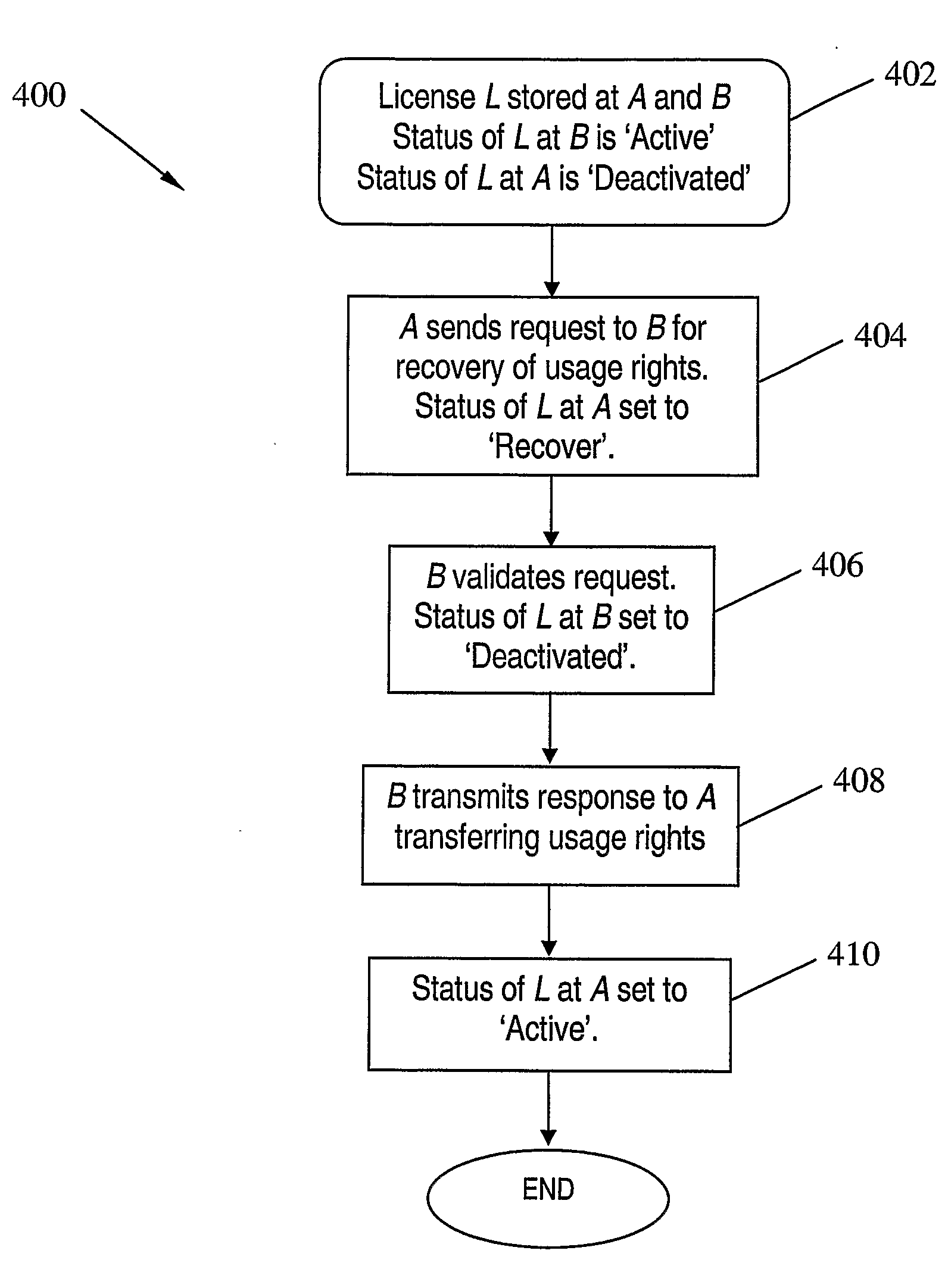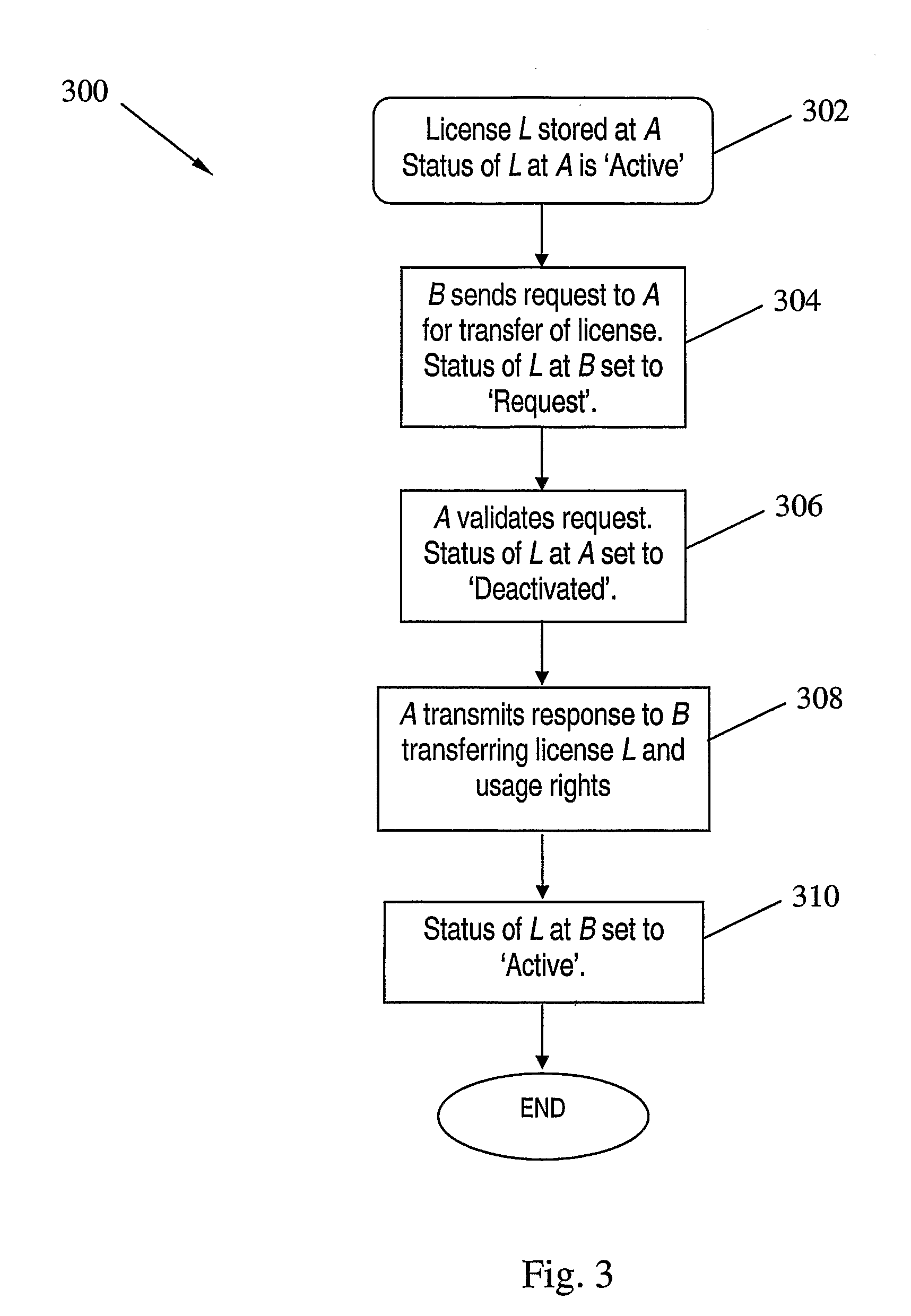Digital License Sharing System and Method
a license sharing and digital technology, applied in the field of digital rights management, can solve the problems of content not specifying mechanisms, license cannot be transferred and used on another device, content cannot be decrypted,
- Summary
- Abstract
- Description
- Claims
- Application Information
AI Technical Summary
Benefits of technology
Problems solved by technology
Method used
Image
Examples
case 1
[0159] There is no communication problem between A and B. Exchanged messages are not disrupted by an attacker.
[0160] The protocol runs successfully. At the end of the license transfer, only B possesses the license, and has a corresponding track file entry with the ‘Active’ flag.
case 2
[0161] A fails to receive the license request from B in step 2.
[0162] The protocol aborts after time out T. B does not obtain the license. L is still kept on A's device. The transaction entry for L on A's device is unchanged.
case 3
[0163] B fails to receive the license from A in step 3.
[0164] The protocol aborts after time out T. The transaction flag for L in the track file on A's device is marked as deactivated, so A cannot use L any more. However, B can get the license from A through a negotiation procedure, i.e. B sends the licence request to A again, starting from step 1. This licence request needs to include the current transaction flag of L in the track file on B, which should be ‘Request’. A will check the license request in the negotiation procedure. Since L is still physically stored on A's device, A will send L to B again if the verification is successful. Finally, B will get license L and set the transaction flag for L as ‘Active’, so that B cannot send a valid license request to A again.
[0165] Moreover, the inventive system can prevent replay attack. Suppose that a malicious user has some licenses with ‘Active’ flag on his device. The user may take a snapshot of the current state of the track fil...
PUM
 Login to View More
Login to View More Abstract
Description
Claims
Application Information
 Login to View More
Login to View More - R&D
- Intellectual Property
- Life Sciences
- Materials
- Tech Scout
- Unparalleled Data Quality
- Higher Quality Content
- 60% Fewer Hallucinations
Browse by: Latest US Patents, China's latest patents, Technical Efficacy Thesaurus, Application Domain, Technology Topic, Popular Technical Reports.
© 2025 PatSnap. All rights reserved.Legal|Privacy policy|Modern Slavery Act Transparency Statement|Sitemap|About US| Contact US: help@patsnap.com



